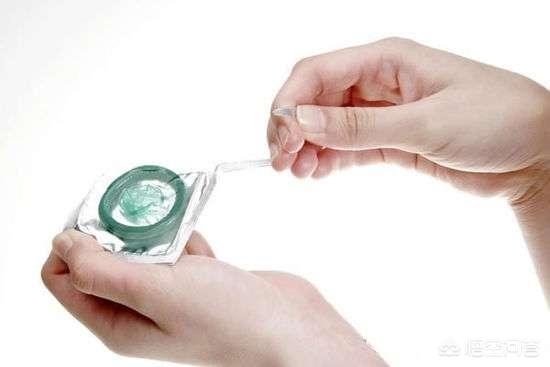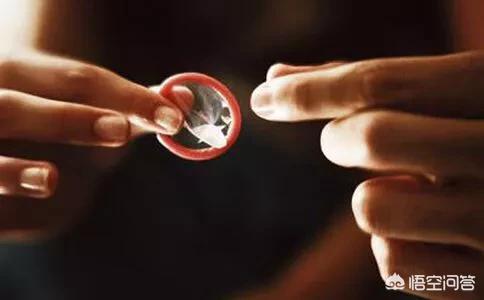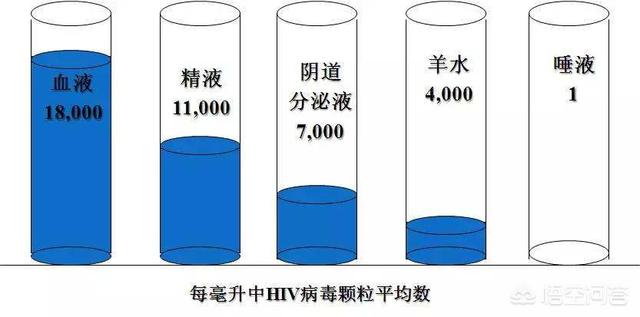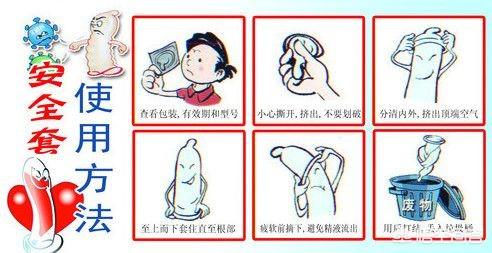What are the chances of getting HIV from a condom?
What are the chances of getting HIV from a condom?
We all know that condoms are the best way to prevent AIDS, of course, the best prevention is not to have sex with people with unknown health conditions, but many people can not do, then condoms are the last line of defense, and the effect is very good, but a large number of studies have found that condoms can not be 100% prevented, but just like condoms can not be 100% contraceptive, condoms to prevent AIDS failure, mainly because of incorrect use of condoms, rather than a problem with condoms themselves. Or the prevention of the flu is a result of people not wearing masks properly, not a problem with the masks themselves. HIV is mainly found in the blood, violating the body's immune system and destroying CD4+ T lymphocytes, and its mode of transmission was once predominantly blood-borne, while almost all viruses present in the blood can also be found in male semen, and most of them can be found in female vaginal secretions, and of course, HIV can be transmitted by female breast milk as well.
HIV is mainly found in the blood, violating the body's immune system and destroying CD4+ T lymphocytes, and its mode of transmission was once predominantly blood-borne, while almost all viruses present in the blood can also be found in male semen, and most of them can be found in female vaginal secretions, and of course, HIV can be transmitted by female breast milk as well.
Therefore, the main way of HIV transmission is through the exchange of various bodily fluids such as blood, breast milk, semen, vaginal secretions, and so on, with the infected person. Simply put, the three classic ways of HIV transmission are blood, sex and mother-to-child transmission. From a worldwide perspective, there has been a gradual shift from blood transmission to sexual transmission. Eating, drinking and sex are the greatest desires of human beings. The pleasure of fish and water has always been an activity that people are ashamed to talk about, but are happy to indulge in. The World Health Organization considers the high-risk groups for AIDS to be: men who have sex with men, injecting drug users, people in prisons and other closed environments, sex workers (as well as people who receive their services), and transgender people. As can be seen from the above, several high-risk groups account for most of the sex-related ones. Therefore, to prevent AIDS, we must pay attention to the transmission of the virus during sexual activity. So, how can we have a smooth sex life and at the same time maximize the prevention of HIV transmission? Condoms were born out of this need.
Condom is a kind of condom made of high-strength, highly elastic latex film, which serves as a kind of physical barrier. Taiwan is also known as condoms, some people like to call condoms, the original purpose seems to be really "safe", history records, the ancient Egyptians used condoms to avoid penile injuries or insect bites, and later in the socio-economic and humanistic concepts of change, only gradually turned to the "contraceptive" as the main purpose. Later, in the changing socio-economic and humanistic concepts, it gradually shifted to "contraception" as its main purpose, and was called a condom in name only. After the emergence of the AIDS problem, condoms began to take on the function of "safe guarding", and condoms began to appear on the shelves of supermarkets and department stores in the United States in the 1980s. There are also books dedicated to the history of the condom, such as the book "The Humble Condom: A History of Condom Evolution" by Aine Collier (USA), which states: "The previously untold story of this little gadget involves the study of human behavior, technology, disease, politics, psychology, and religion. It's a funny, sad, male supremacist, sexy, and open story. It's also a well-timed story, because we live in a time when the world is facing the threat of a devastating AIDS epidemic, which is just like the plague of old, except that the cause has become sexual intercourse. The only way to prevent it is with the "humble condom".
 Organizers of major international games, such as the Olympic Games and World Cup, usually give free condoms to participating athletes. From 8,000 for the 1988 Seoul Olympics to 90,000 for the 1992 Barcelona Olympics, to 100,000 for the Beijing Olympics, to 450,000 for the Rio Olympics, and now for the ongoing PyeongChang Winter Olympics, according to South Korean media reports, the Olympic organizing committee will be distributing 110,000 condoms free of charge, and the most important purpose of the Olympic organizing committee for distributing condoms at these Olympic Games is exactly that: to prevent The main purpose of these Olympic organizing committees to distribute condoms is precisely: to prevent AIDS.
Organizers of major international games, such as the Olympic Games and World Cup, usually give free condoms to participating athletes. From 8,000 for the 1988 Seoul Olympics to 90,000 for the 1992 Barcelona Olympics, to 100,000 for the Beijing Olympics, to 450,000 for the Rio Olympics, and now for the ongoing PyeongChang Winter Olympics, according to South Korean media reports, the Olympic organizing committee will be distributing 110,000 condoms free of charge, and the most important purpose of the Olympic organizing committee for distributing condoms at these Olympic Games is exactly that: to prevent The main purpose of these Olympic organizing committees to distribute condoms is precisely: to prevent AIDS.
From this, there seems to be little doubt worldwide about the claim that condoms can prevent AIDS. So, can condoms really and effectively prevent AIDS? Can it reach 100%? We look at the protection mechanism of the condom, to put it bluntly, is in the process of sexual behavior to separate the two sides, to avoid contact with bodily fluids, theoretically cut off the transmission of this type of disease transmitted through contact with bodily fluids. So the condom in the end can they and the other side of the real "isolation" to avoid contact between the two sides of the body fluids?
Some people say that there are natural gaps in the rubber of condoms (gaps of 5,000 to 70,000 nanometers), while the HIV virus has a diameter of only 120 nanometers, which cannot block the passage of the HIV virus at all, thus inferring that the preventive effect of condoms on AIDS is limited. And experiments have proved that even the Hepatitis B virus, which is only 42nm (PS: Hepatitis B can also be transmitted through sexual intercourse), is unable to pass through the barrier formed by latex condoms. This is because the most important determinant of whether a virus can pass through a certain pore size is actually the flow of liquid, that is to say, even if the condom pore is several times larger than the diameter of the virus, as long as the flow of liquid is blocked, the virus particles will not be able to pass through (and even if they can pass through, it will be a very small number of them, and the amount of this virus will not be able to reach the conditions of infection (Lytle CD, et al. A sensitive method for evaluating condoms as virus barrier). for evaluating condoms as virus barriers. J AOAC Int. 1997; 80(2):319-324). This assumes, of course, that you make sure you are wearing condoms properly. Studies have shown that consistent condom use can80%--90%地降低艾滋病传染的危险(Markus J. Steiner, Ph.D., and Willard Cates, Jr., M.D., M.P.H. Condoms and Sexually-Transmitted Infections N Engl J Med 2006; 354:2642-2643)。
However, in practice, people often cannot guarantee that the quality of the condom used each time is reliable, nor can they guarantee that the method of use is completely correct each time, and thus condoms may still slip or break during sexual intercourse, and thus the actual protection against sexually transmitted diseases can hardly reach the theoretical level. This does not mean that condoms are not effective in preventing HIV. Studies have shown that consistent condom use reduces the incidence of HIV transmission compared to partners who do not use condoms.70% (homosexual) - 80% (heterosexual)Around. In regions or countries where the sex trade is legalized, condom use among the sex worker population is 80-100%, and HIV maintains a low prevalence among this seemingly high-risk population because, after all, contracting the disease can hurt business.
The survey found that the failure rate of condom use for HIV prevention is related to the user's education, with high educated people having a low failure rate, and other studies have found that low educated people tend to this poor adherence, which may be related to the lack of adherence to the use of condoms or not being able to use a condom the entire time each time they have sex.
In actual counseling, we need to find out if the counselor uses condoms every time, and if he or she uses condoms throughout each session. Theoretically, if there is no contact with the other person's bodily fluids during sexual activity, it is impossible to get infected because the virus cannot leave a person's bodily fluids and move freely.
From a medical point of view, the efficiency of preventive measures against a certain disease can be as high as80-90It is already very high. In response to the question raised by some perfectionists as to whether the effective rate of prevention can reach 100%, we can only say that as long as one sits in a car and drives, there is a risk of losing one's life in a car accident, as long as one rides a bicycle on the road, there is a risk of being hit by a car and killed, and as long as one eats, there is a risk of choking to death, but we still live as usual, and we still deem it to be a good idea, and people cannot give up their lives in the great probability because of small probability events, can they?
Older drivers to talk about:


AIDS (HIV), Acquired Immune Deficiency Syndrome, is actually, to put it bluntly, an attack on the body's immune system that destroys the body's lymphocytes, leading to a decline in immunity deficiency, and then infections with a wide range of diseases with a high mortality rate.
AIDS is transmitted in three ways: blood, sexual contact, and mother-to-child.
In fact, to put it bluntly, it's blood-borne, and it's actually very difficult to get infected; a few conditions must be met: a sufficient amount of virus, rapid entry into the bloodstream, and the onset of infection.
And the use of condoms on sexual contact effectively isolates the relevant contact, because the conditions for the spread of AIDS through sexual contact is also a wound, and then have sex with a person with AIDS, and then the amount of virus is enough to enter the bloodstream quickly through the wound, and then infected.
So as long as condoms are used correctly and avoid breakage, the probability of contracting HIV is almost non-existent, but sometimes there is a particularly small probability of an event occurring because there is no way to verify that the condom is intact.
So use condoms safely and correctly and AIDS will stay away.
Correct use of 0, in fact, do not use a condom, normal insertion type, male to female less than one percent, female to male less than five hundred percent! Of course getting hit is 100%! It mainly depends on whether the skin has been broken, and the amount of virus exposure after the break, and generally there is very little oral transmission, because saliva has a dilution effect.
谢邀.
The spread and use of safety has greatly reduced the spread of HIV. Why?
Because we know that AIDS is a syndrome characterized by systemic immunodeficiency caused by the HIV virus, which is found mainly in sperm, vaginal secretions, sweat and mucus, and that the distribution of this viral load varies, as shown in the following chart.
The principle of HIV transmission is simply that the infected and healthy people have an exchange of body fluids, such as when having sex, the male sperm if carrying the virus, and the female will have direct contact with body fluids, and sperm in the viral load is fully capable of reaching the amount of infectious. If you wear a condom at this time, it will directly block the direct contact of the body fluid treatment, that is, cut off the transmission pathway, naturally reducing the spread of AIDS.

But can condoms stop the spread of HIV 100%? There are exceptions to the rule, and it is impossible to block 100 percent of the transmission, but from the point of view of the cases in which people are still infected with AIDS even after wearing condoms, there are mainly the following reasons.
I. Incorrect way of wearing condoms
II. Failure to wear it all the way
Third, the quality of condoms is not good

Therefore, the full and proper use of condoms is an important means of interrupting the spread of HIV and is the most cost-effective and efficient way to do so. This is the beginning of the article that condoms can greatly reduce the chances of HIV infection!
Follow the headline "talk about public health", to learn more about health knowledge!
As long as the AIDS infected body cells and the infected person's blood contact will be infected with AIDS, accurately said that people with HIV, blood vessel rupture blood flow to the infected person's blood vessels, in the sexual act if both of the two blood vessels have rupture, it is very easy to infect each other, this probability is still relatively small, but do not treat lightly, according to the survey shows that information, university colleges and universities are infected with a rapid rise in condom The condom is the only tool that can prevent mutual infection, the effect is very good, improper use can also cause mutual infection. So you need to pay attention to the way you use them.

HIV requires very high conditions for survival and loses its infectious ability very quickly after it leaves the body, even in a culture medium it lives for more than 20 days at most. Therefore, AIDS cannot survive for a long time in a condom, thus eliminating transmission.

This question and answer are from the site users, does not represent the position of the site, such as infringement, please contact the administrator to delete.